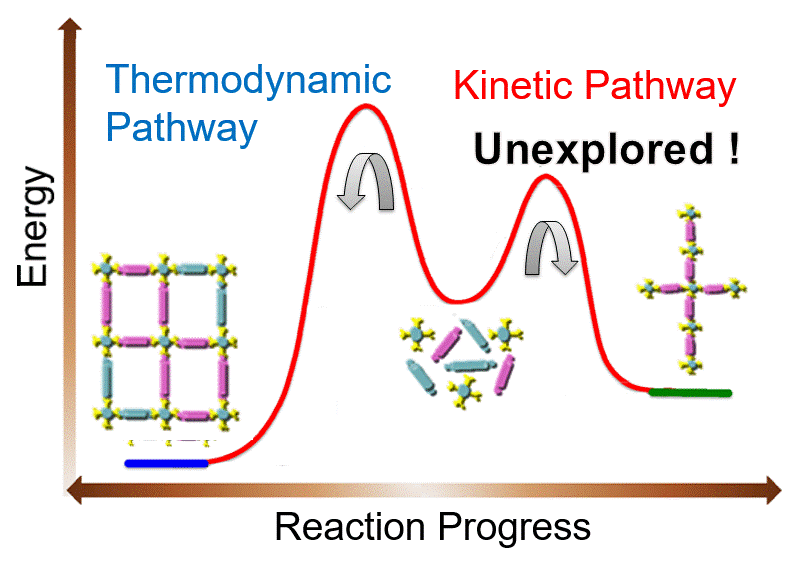RESEARCH
-Design of nano-level structures kinetically-
Porous coordination network (porous coordination polymer or metal organic frameworks) have mainly studied as thermodynamically assembled structure. However, before reaching to the thermal equilibrium, the system go through many intermediate states. If we use such an intermediate, we can achieve different structures which is not available under the thermodynamic conditions. Moreover, kinetic control can create "interactive site" in a pore. Such pores can be utilized for unique absorption, separation, reaction, physical properties, and so on. Recently we have started to synthesize new ligands and study porous coordination network which has redox properties.

-Reactions in Nano-space-
We not only synthesize the porous network but also observe reactions using pore and mechanism. Especially we use in-situ X-ray analysis and try to “see” the reaction. “Seeing is believing” is our key ward.
-Properties of Nano-space-
Generally, porous coordination network is insulator because of large band gap. However if we can control the redox potential of ligands, we can achieve conductive porous network. We study the basic physical property of it. It is difficult to figure out the physical property because of the solid state measurement. We combine many kinds of analysis and keep on trying.
-Device fabrication using Nano-space-
Crystalline materials with nano space are good candidates of device because of its high surface area to produce high sensitivity and guest selectivity. Especially porous materials with redox activity has conductivity which is anisotropic. We are producing sensors by fabricating thin film using these properties and investigating sensing mechanism with molecular level.
-Ab initio structure analysis of crystalline and amorphous materials-
We characterize the synthesized materials by X-ray diffractions. Meta stable state often shows phase transition with large structure and properties change. Our target for structure analysis is diverse such as single crystals, crystalline powder, and amorphous. To determine the structure by ab inito method, we use X-ray (laboratory or synchrotron). Especially ab initio X-ray powder diffraction structure analysis requires special crystallographic knowledge. However, sometimes, the materials with interesting properties is obtained as only powder, so, we use ab initio XRPD method to determine the crystal structure of such materials. Furthermore, we have started the investigation of amorphous phase using total scattering and EXAFS. We characterize solid materials from micro to macro size.